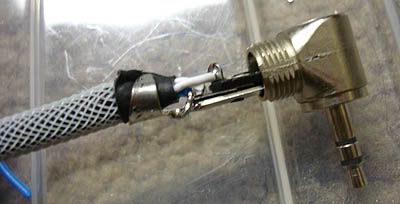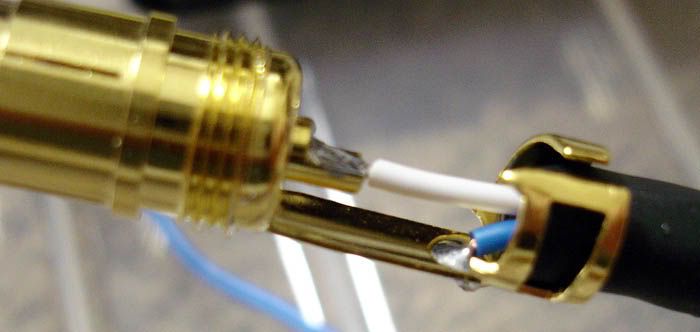hey walter,
photobucket has a file size limit restriction, you just need to save the pics at a lower quality or shrink them a bit, for photobucket to accept them.
if you want to post the pics directly you need to use the IMG tags
regarding the cable, nice job for a first time. your solder joints are clean and wet looking.
some contructive critism? You seemed to have stripped too much insulation and jacket on your first cable. i.e. on the switchcraft, the clamps should be the jacket like so
you can avoid over stripping by placing the conencto next to the wire for placement prior to stripping. OR you can over strip the leads so that you can fit the clamp over the jacket, then cut off the excess wire on the leads.
be sure to snip off the excess wire exposed past the sildering point with some fiskers.
for the RCA connector, you should strip just where the insulation meets the signal pin.
other then that, I am impressed!
I look forward to you R/A mini cable!







